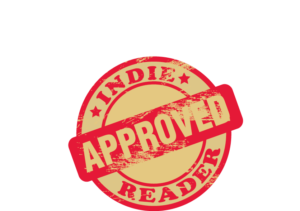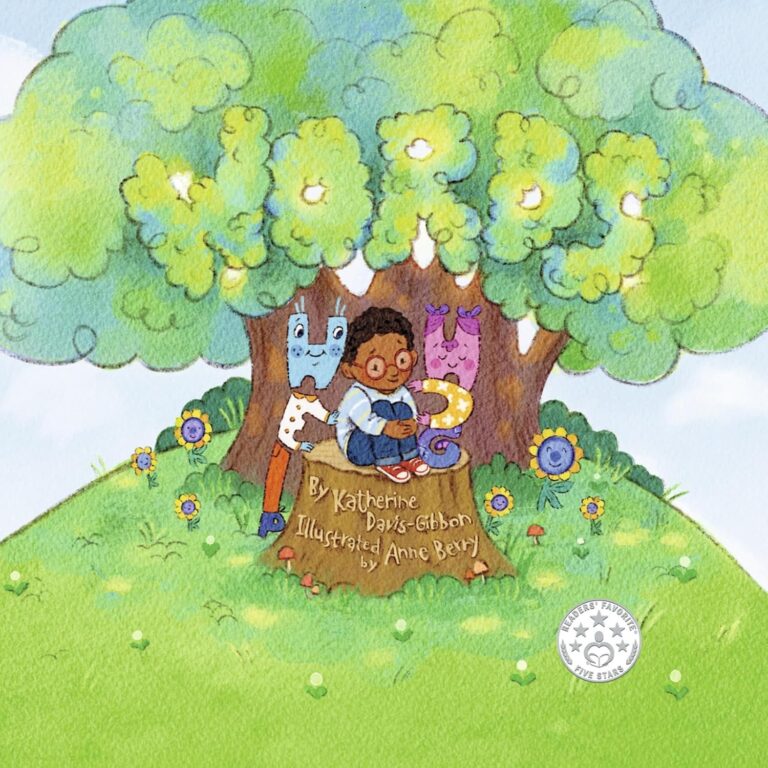 Words received a 4+ star review, making it an IndieReader Approved title.
Words received a 4+ star review, making it an IndieReader Approved title.
Following find an interview with author Katherine Davis-Gibbon.
What is the name of the book and when was it published?
Words was published on April 6th, 2025.
What’s the book’s first line?
Words are a lot like people.
What’s the book about? Give us the “pitch.”
A diverse group of children discover a park where words literally come to life. Some words are warmer and more inviting, while others are pushy or prickly or odd. Not every word makes the best first impression, but as they play and share adventures, the children connect more deeply with language. They learn that words have superpowers and grow to love them for their quirks. They see that words make excellent friends, who magically appear just as they’re needed and perfectly mirror what kids feel. The more these children bond with language, the more they tap into their inner voice—and as they dare to give it expression, they gain more respect for the power of words.
What inspired you to write the book?
I think of words as a group of friends who know me better than I know myself. They easily attune to my feelings, but sometimes they choose to push me, instead. Provided that I am willing to listen, words can be incredible teachers, who patiently (but rather persistently) keep on guiding me towards the truth. I wanted to share this gift with children, particularly kids in the 4-7 age group who are just beginning to find their voice. I hope to help kids bond with language, because the more we let words into our hearts, the more that they will show up for us.
What’s the main reason someone should really read this book?
The child of today is growing up in a combative environment, where it is “normal” to weaponize words and broadcast views on social media. Amid all the noise, friction, and unpleasantness, it’s difficult for kids to find their own voice—let alone delight in it or feel safe using it. I wrote Words with all of this in mind and crafted the book for very young children, because I want to show them that reading is fun and impart the message that language is sacred.
What’s the most distinctive thing about the main character? Who—real or fictional—would you say the character reminds you of?
The word-characters in the book are fantastical and silly. They are anthropomorphized, but not-quite-human—part animal, part person, part creature, part word. They come in all colors, shapes, and sizes, each with its own personality: its own unique strengths and foibles, its own assortment of quirks and charm. Collectively, as a cast of characters, they are wonderfully, amusingly, instructively fluid. As they remind me of other people, they also remind me of myself.

Is this the first book you’ve written?
Words is the second one that I’ve published. My debut book, My Old Friend, Then, which also received critical praise and award recognition, is a mindfulness story for preschoolers and early elementary school children. So much of what’s out there for kids on this topic hammers home the same old message. “Slow down.” “Sit still.” “Breathe.” “Take a moment.” My Old Friend, Then digs a bit deeper. The language is simple and the story relatable, but instead of telling kids how to behave, it illustrates what they can do with their thoughts. Mindfulness happens when we make a choice, deciding which thoughts we want to befriend and which ones to take a little less seriously.
How much time do you generally spend on your writing?
My ritual involves getting up at stupid o’clock in the morning and writing for at least two hours before my kids are awake. I’m not an early riser by nature, but I’ve found that these are the golden hours, when I am least likely to be interrupted.
I read and write whenever I can (on airplanes, in waiting rooms, in the middle of the night on my phone). I always have three books in my car and two or three writing projects in progress. A part of my brain is always writing. As a parent, one needs to be opportunistic.
Would you go traditional if a publisher came calling? If so, why?
I would consider going traditional, because it would help me reach more readers and I would benefit from the support. There are advantages, though, to publishing independently. I’m enjoying carving out my own niche and exploring who I am as a children’s book author. (With that being said, if Compendium calls, I wouldn’t say no!)
What’s the best and hardest part of being an indie?
The hardest part is the learning curve and having to wear so many hats, but there are many positives, too. I am an extremely visual thinker. I know what I want my books to look like, so it’s important to me to personally select my illustrators and collaborate closely with them on the work. I don’t think I could hand my project over to a stranger and say, “Look forward to seeing the art someday! Good luck!” The best part of being an indie author is undoubtedly the freedom.
Is there something in particular that motivates you (fame, fortune)?
Writing is its own reward. (Thank goodness for that, because it’s such hard work!)
Which book do you wish you could have written?
In the children’s genre, I wish I’d written What Do You Do with a Problem? By Kobi Yamada. In the creative nonfiction genre, I wish I’d written Teaching a Stone to Talk by Annie Dillard.
